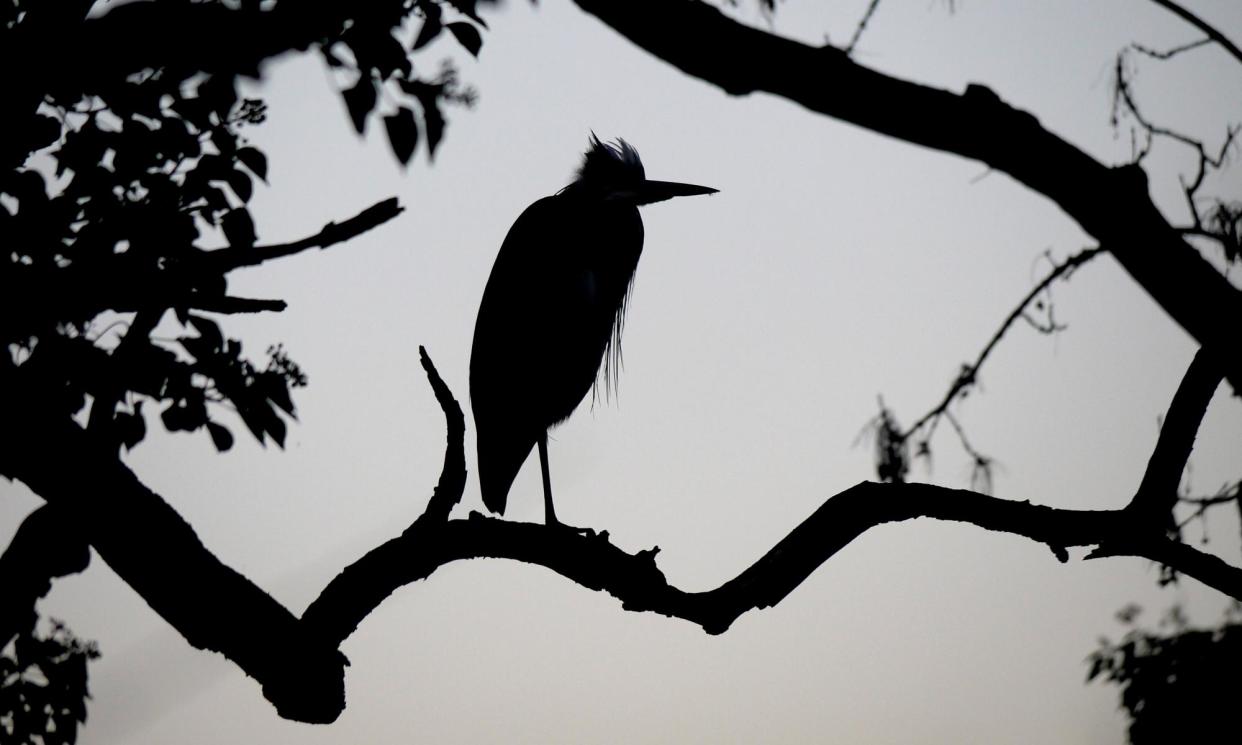Country diary: A single discordant voice in the lullaby of birdsong

With six buzzards and a pair of red kites circling over the relatively small stand of trees that I call Badger Town 2 this morning, there is likely to be great competition here for both nesting facilities and food. The wood is a mixed stand of thoughtfully planted larch, pine, oak, birch and beech, surrounded by a frontage of holly, hawthorn and gorse. The whole thing is only 400m x 40m, and I have recently also watched jays, woodpeckers and nuthatches disappear inside to join the 30-strong badger clan.
On one wet afternoon recently, at least 500 rooks deserted the fields and took shelter beneath the canopy. It was a dreich day, and as the sun caused a light steam to rise from the treetops, I was privy to the most musical and beautiful forest lullaby, reminiscent of a rainforest. The birds hummed, mewed, chunnered and whispered – a different kind of murmuration – and although there were no howler monkeys, there was the equally discordant call of a single grey heron when the rain stopped. The reptilian predator soon departed, but did stop to snaffle a careless frog in an overnight flood pool.
As the heron swallowed the amphibian whole, something caught my eye by the drystone wall, a will-o’-the-wisp weasel, which literally threaded itself in and out of the wall as though it was not there, returning six or seven times to check on me. Males can reach 22cm in length and weigh up to 130g, the females are smaller. I’m guessing this was a male with the characteristic colouration of russet above and cream below, and unlike the larger stoat, no black tip to the tail.
I walked to the wall to look but he was nowhere to be seen, probably scouting for mice and voles. With the breeding season beginning in April, he could eat the rodents and move into their nests. In folklore these tiny mustelids are known as a trickster spirit; this one broke cover and appeared from beneath the Neolithic burial cairn from which this Fairy Hill, or the Hill of the Fairies, got its name. On closer inspection, there were several weasel-sized holes beneath the main stones of the tomb, which I resolved to monitor.
• Country diary is on Twitter at @gdncountrydiary


